
Solutions
Features
Integrations
Pricing
Resources
Scale IT Support operations with AI Agents to resolve repetitive queries instantly, automate service requests, and reduce high-volume tickets easily.
Learn more about IT Support AgentsAutomate HR queries with AI agents—instant responses, less manual work, and more time for your team to focus on what matters.
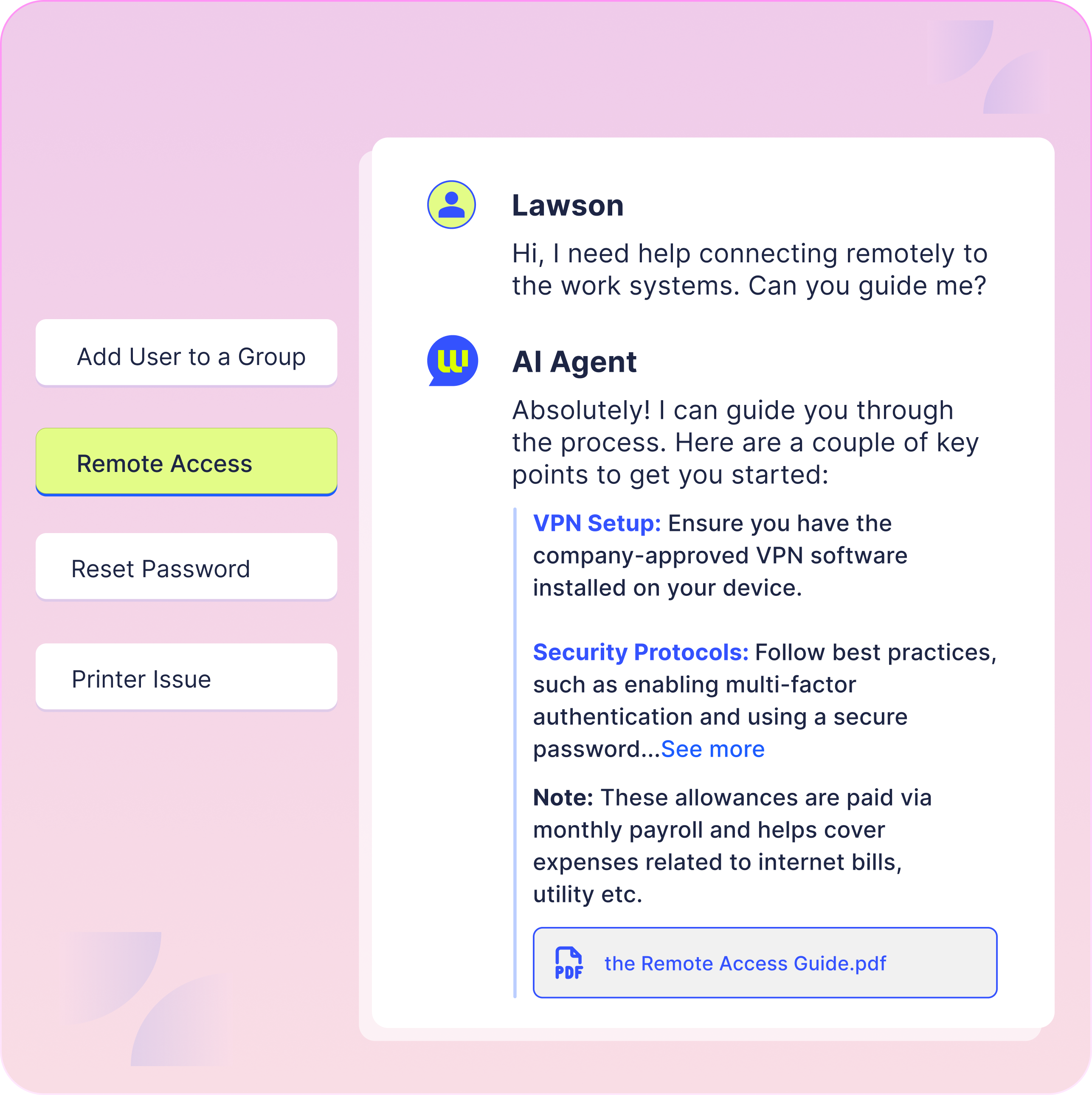
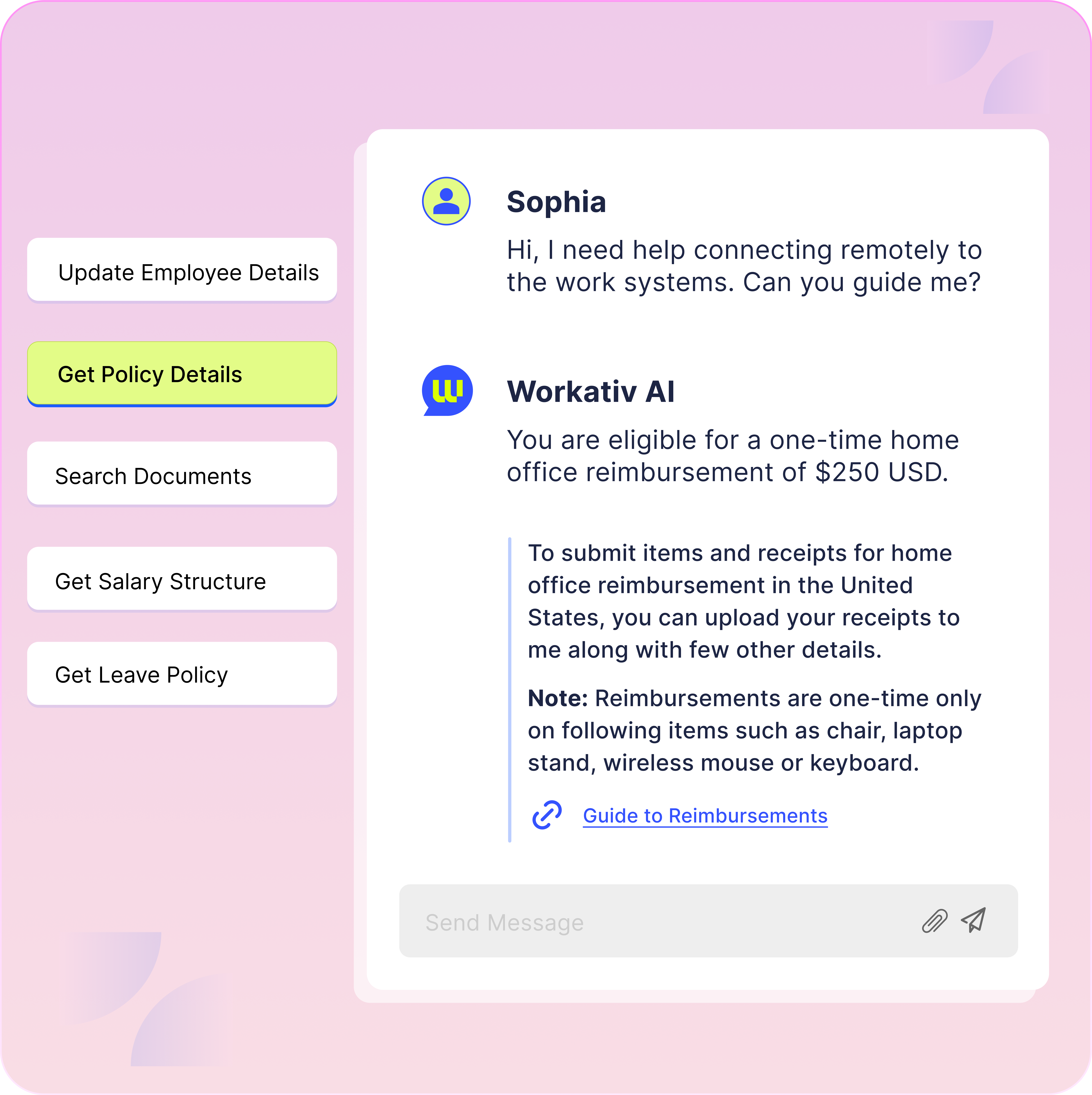
Why Workativ AI Agents Are the Ultimate Solution for Your Support Teams

Build AI agents for HR & IT to automate responses, reduce manual work, resolve faster, and enhance user experience.

Integrate AI agents into your HRIS and ITSM apps to automate onboarding, access provisioning, and ticket resolution workflows.

Leverage AI Search to quickly find and deliver accurate responses from multiple knowledge sources like websites, SharePoint, Confluence and more

Bring human agents in the loop with AI agents for live chat assistance, collaborate on issues and resolve complex queries faster.
Results You Can Expect with Workativ AI Agents
Automate up to 80% of repetitive queries across IT and HR.
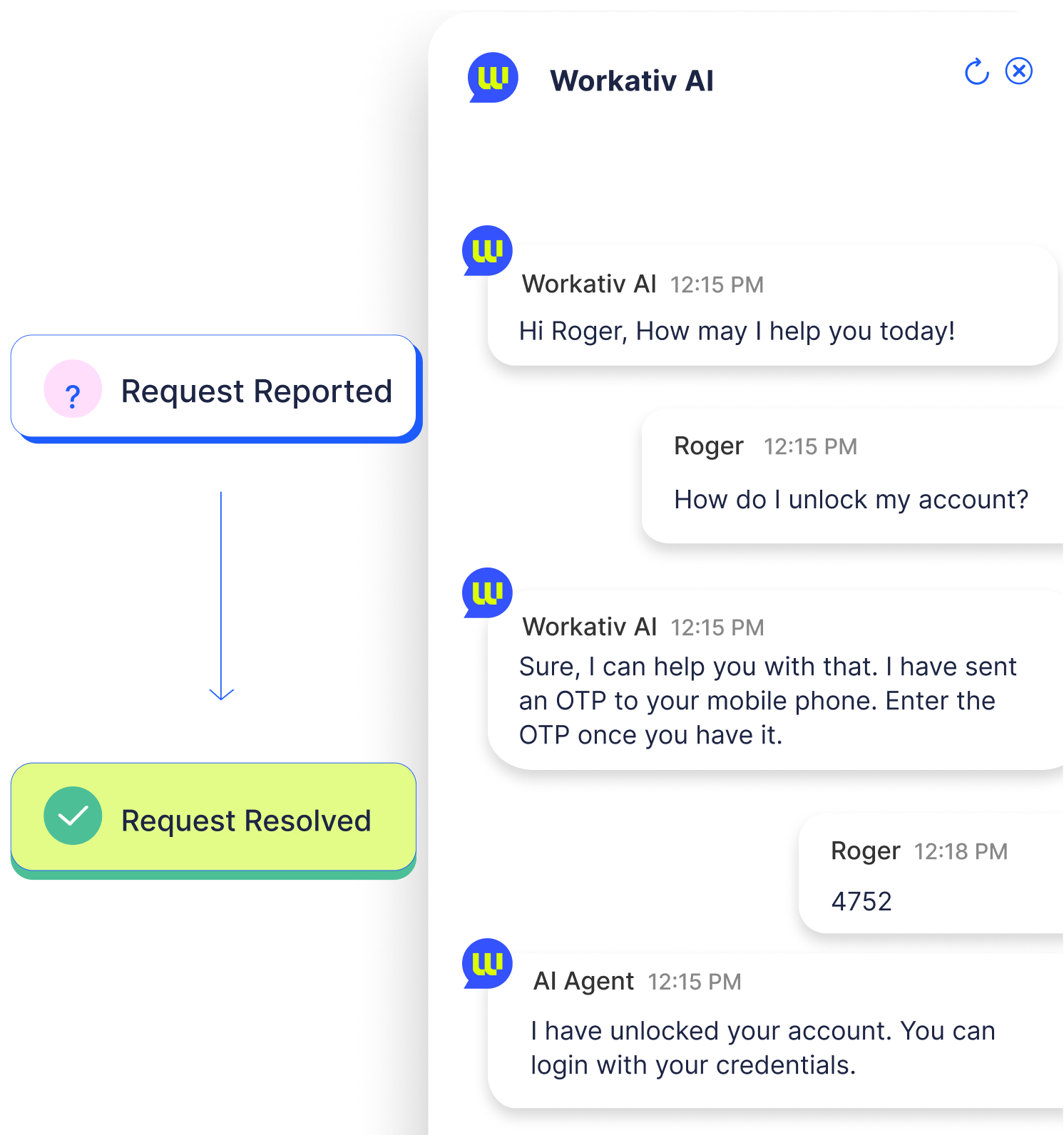
Reduce support operational costs by up to 60%.
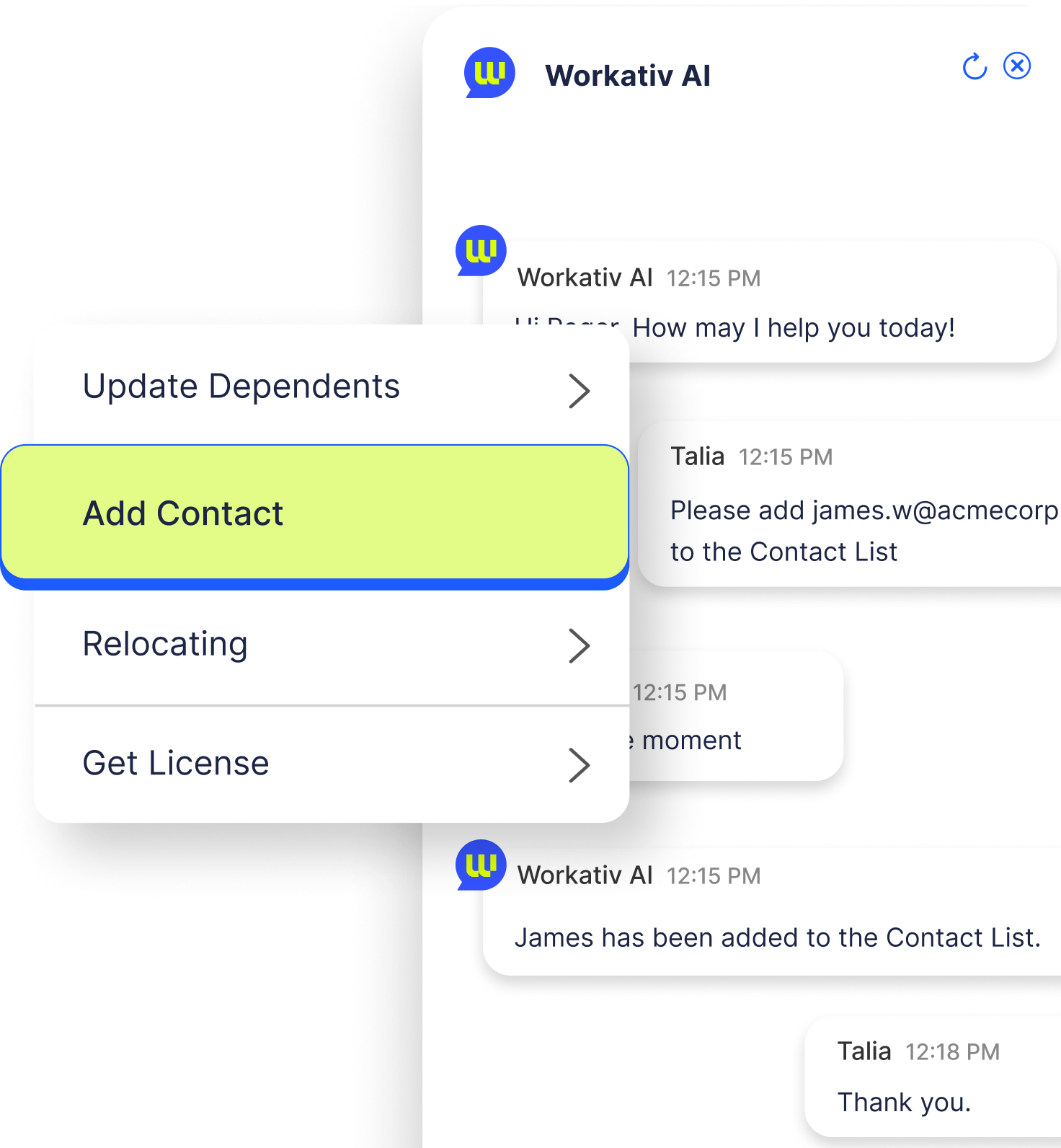
Deliver faster resolutions and enhanced support experiences.
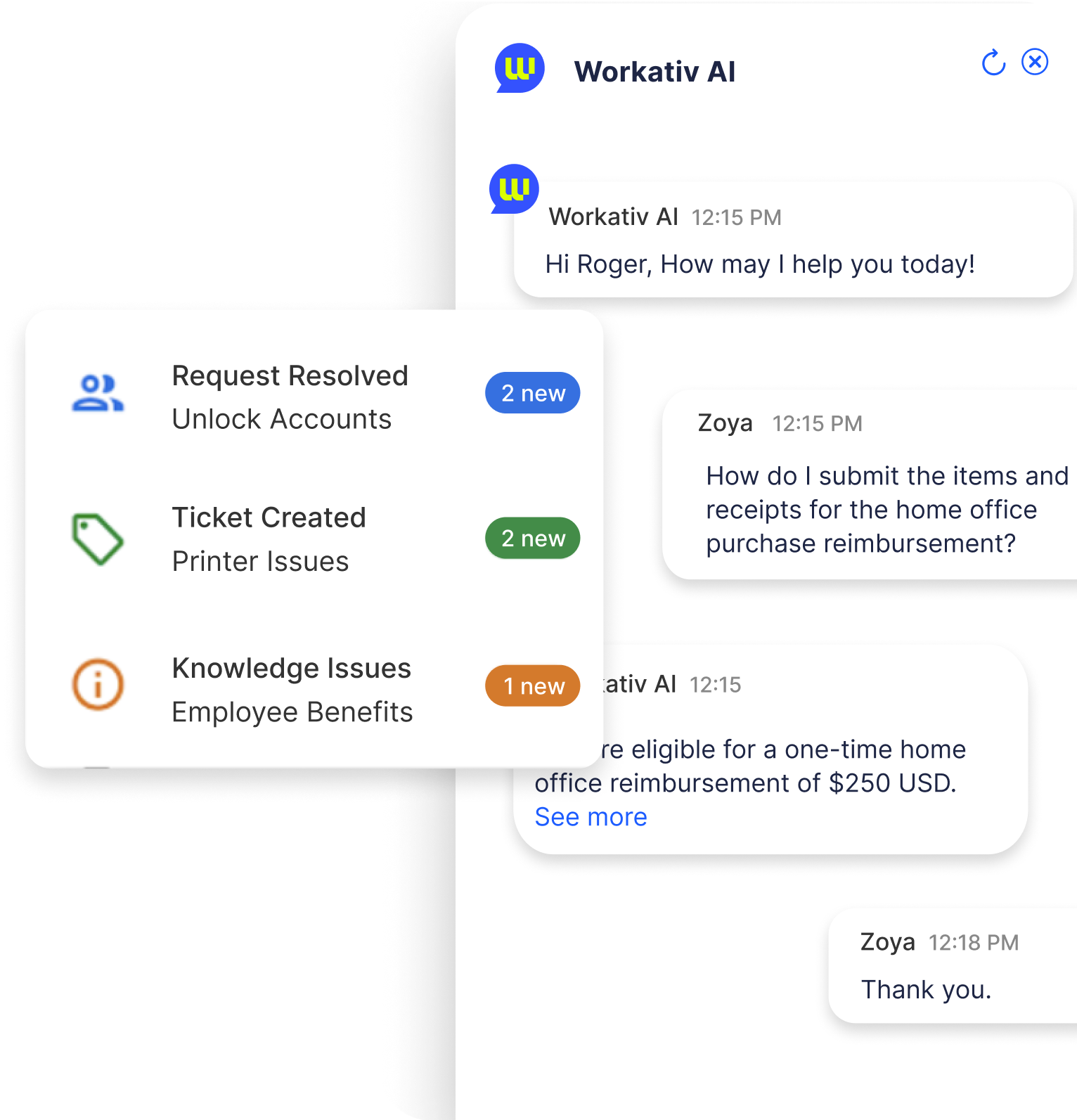
"After researching 5 different chatbot solutions, we decided to go ahead with Workativ for its' easy integration with systems that we use internally at GoTo."



Deploy agentic AI-powered support agents on the platforms your teams already love
Bringing AI-powered support directly into Microsoft Teams enables employees to get help instantly without leaving their workspace.
Learn more about Microsoft Teams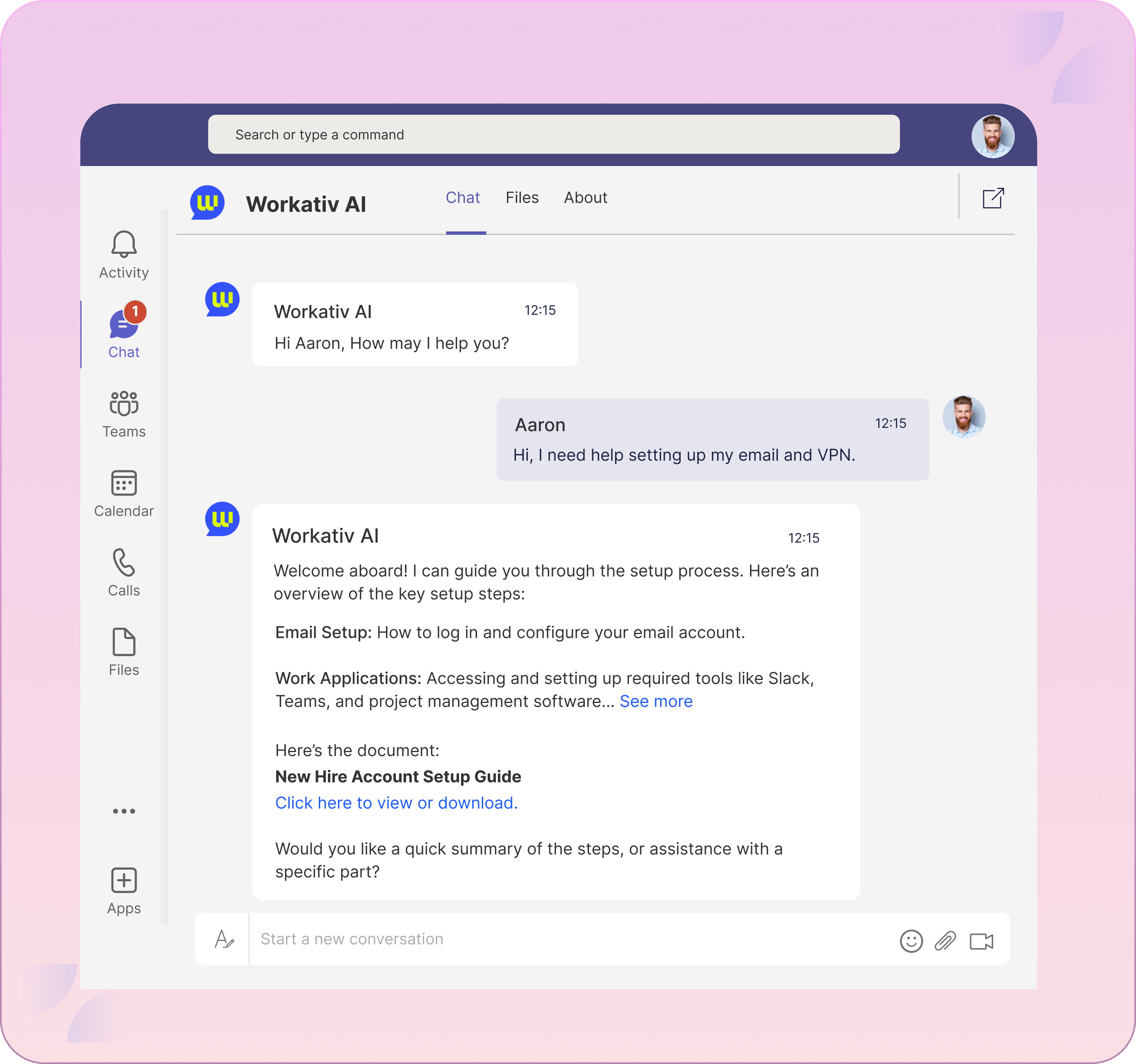
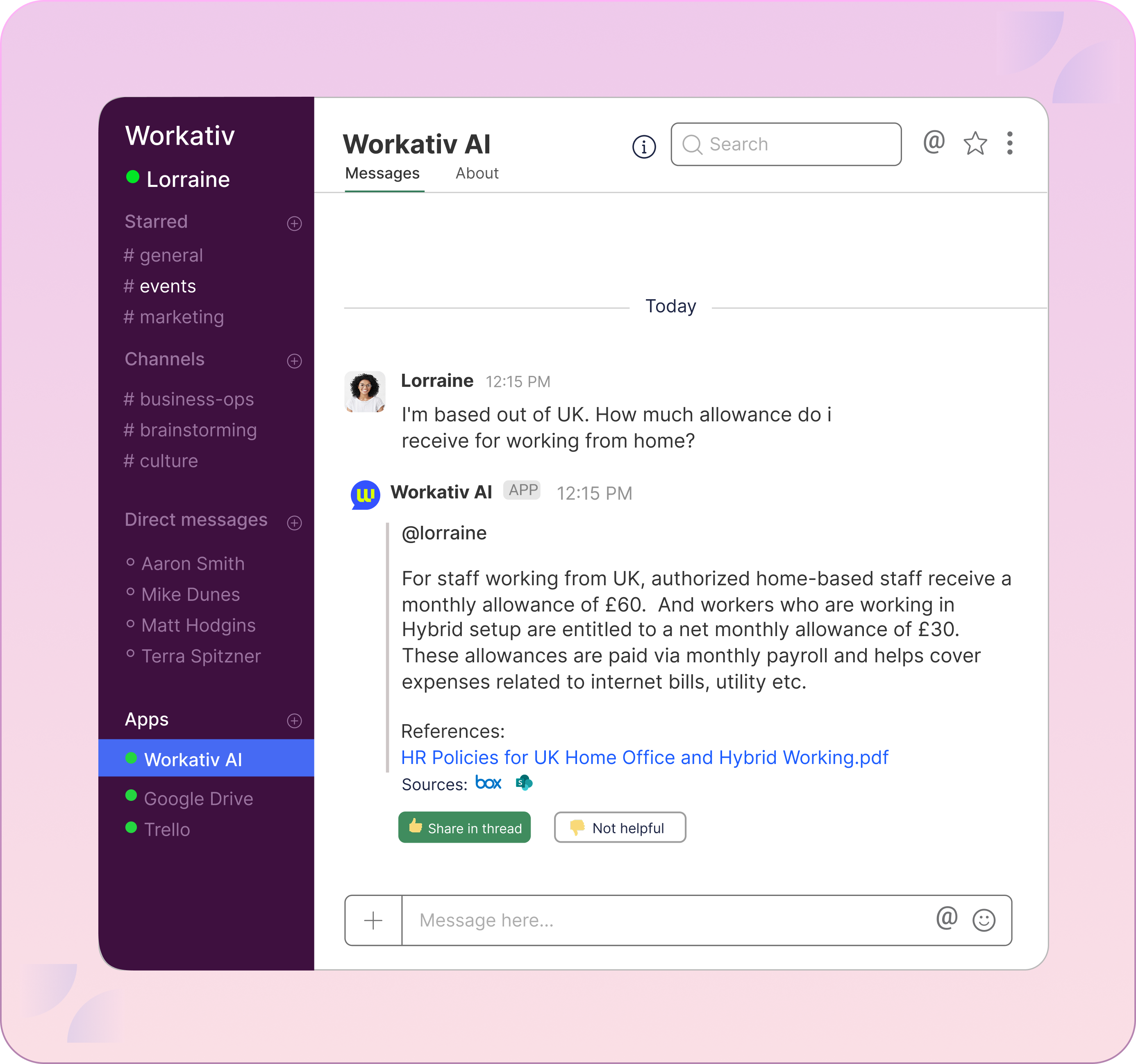
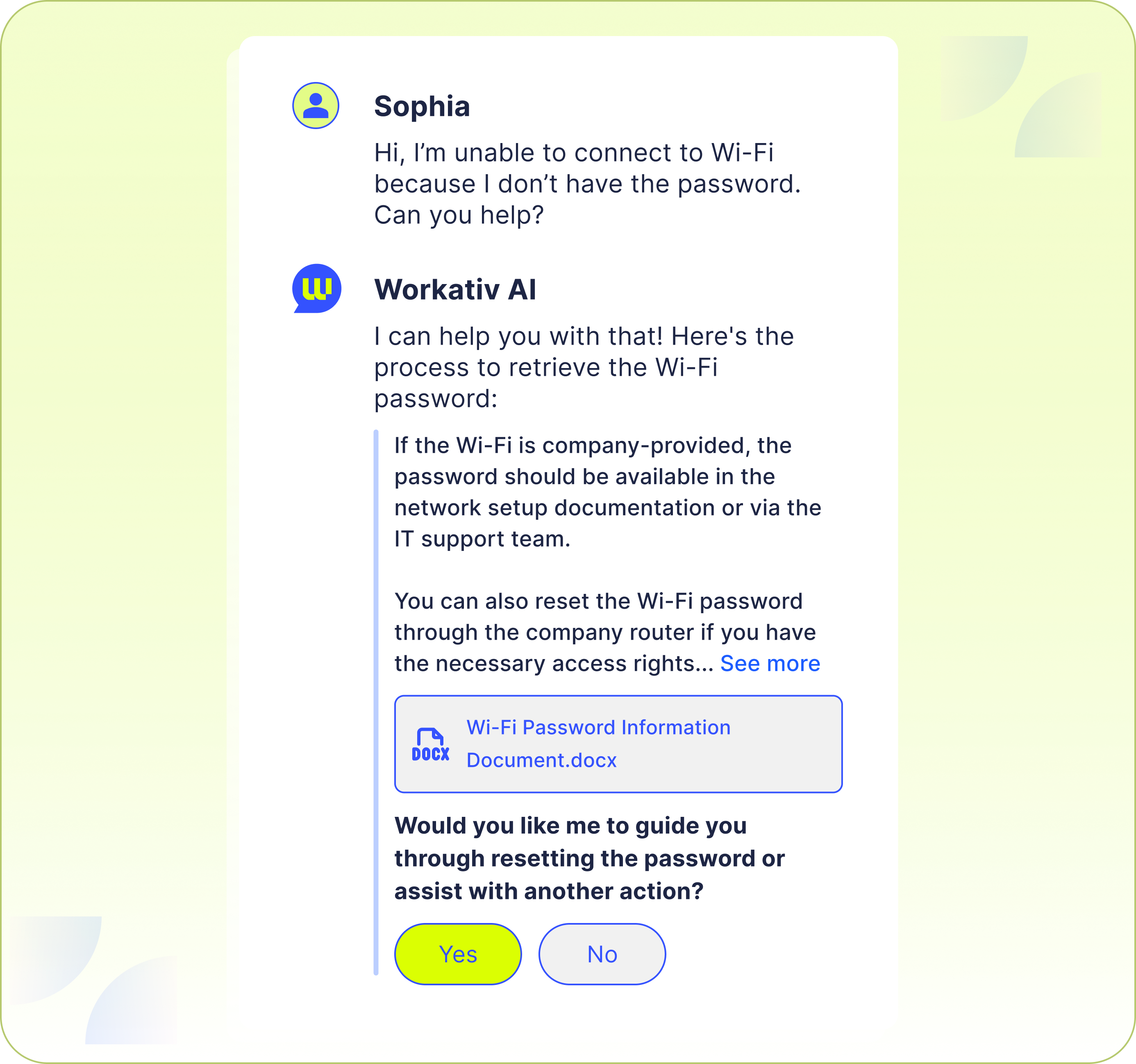
Workativ has implemented robust security processes and controls that are in compliance with industry-leading standards and regulations.

Information Security Management System ISO/IEC 27001:2013 Certified Company

Workativ undergoes a regular third-party audit to certify its products against SOC

Ensuring compliance with GDPR to protect the privacy and data of EU Citizens.

Sophie Hussey explores change management, AI, and risk, sharing strategies for modern organizations facing digital transformation challenges.

Paul Wilkinson discusses ITSM's future, highlighting how culture, innovation, and change shape successful IT strategies in modern organizations.